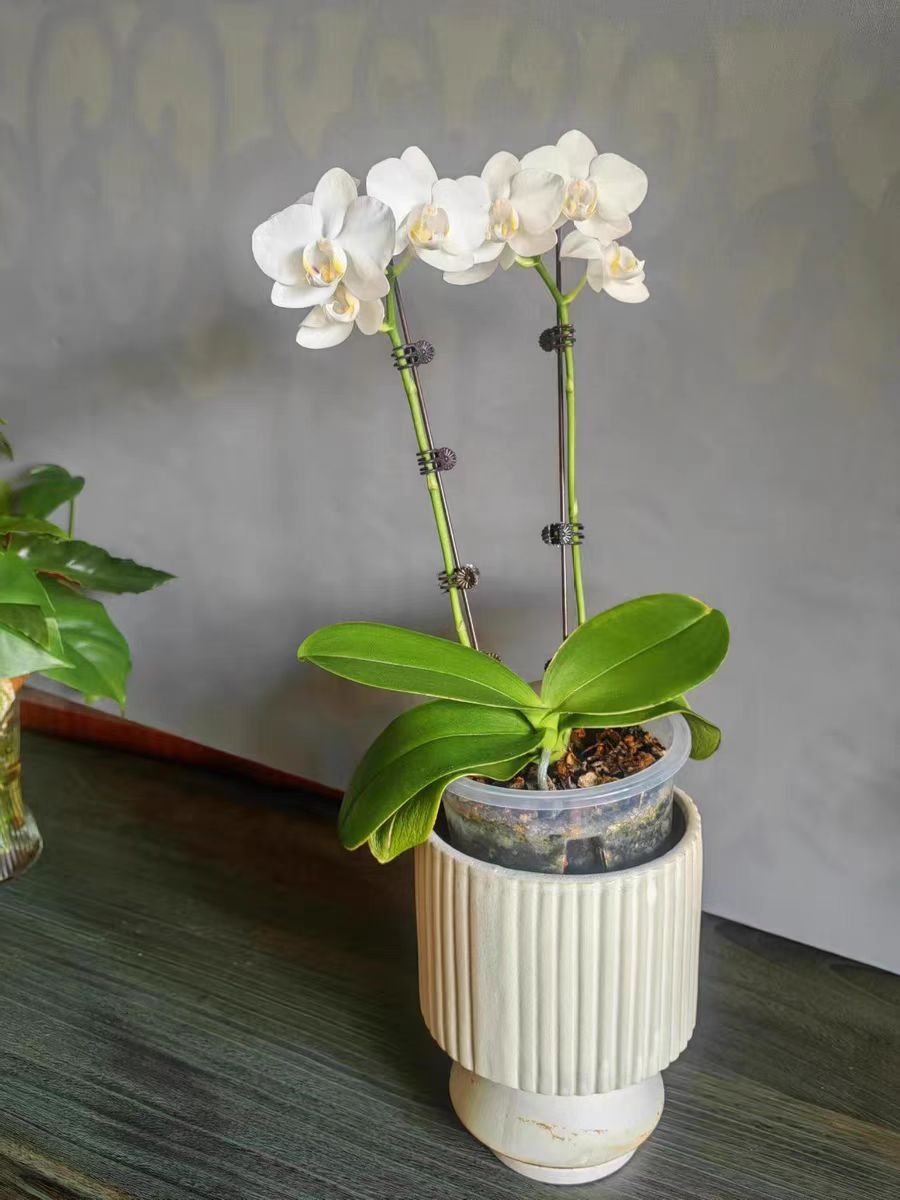As a highly favored ornamental flower, in the flower market, we often see Phalaenopsis plants in two specifications: large seedlings and small seedlings. When purchasing Phalaenopsis, should we choose large seedlings or small seedlings? What are the exact differences between the two, and how should we make a choice? For flower enthusiasts, a deep understanding of their differences is essential to make a choice that suits them best.
Differences in Appearance and Morphology
There are significant differences in appearance between large and small Phalaenopsis seedlings:
Large seedlings are taller and sturdier, with more leaves that are broad, thick, and rich in color. Their pseudobulbs are plump, and their root systems are well-developed, thick, and coiled within the flower pot.
Small seedlings are shorter, with fewer leaves (usually only 2-3), which are narrow, soft in texture, and have small pseudobulbs. Their root systems are relatively thin and sparsely distributed.
These visual differences directly reflect their different growth stages and development levels.
Differences in Growth Cycle and Blooming Time
The two also vary significantly in growth cycle and blooming time:
Large seedlings are in a mature growth stage. With suitable maintenance conditions (e.g., adequate light, appropriate temperature of 15-30°C, and reasonable water and fertilizer management), they generally bloom in the current or next year, quickly meeting people’s demand for ornamental flowers.
Small seedlings are in the early growth stage and require a long period of vegetative growth to accumulate sufficient nutrients. It usually takes 2-3 years or longer for them to develop blooming capability, requiring more patience and time for careful cultivation.
Differences in Maintenance Difficulty
Large and small seedlings also have distinct characteristics in terms of maintenance difficulty:
Large seedlings, being robust, have stronger adaptability to environmental changes and resistance to pests and diseases. Daily maintenance only requires following basic methods, such as regular watering, fertilizing, and maintaining good ventilation, to sustain normal growth.
Small seedlings are less resistant and have more stringent environmental requirements. Strict control is needed for temperature, humidity, light, and the air permeability and fertility of the soil. For example, they are poorly tolerant to low temperatures (temperatures below 10°C may cause frost damage), and both excessive watering (leading to root rot) and insufficient watering (causing poor growth) are risks, requiring more meticulous and professional care.
Differences in Price and Economic Cost
There is a clear distinction in price and economic cost between large and small Phalaenopsis seedlings:
Large seedlings have a longer growth cycle and higher cultivation costs, resulting in relatively high market prices.
Small seedlings, with shorter cultivation times and lower costs, are more affordable.
Budget-conscious consumers may find small seedlings more economical, while those who desire quick blooming effects and have sufficient budgets may prefer large seedlings.
Which is Better: Large or Small Seedlings?
There is no absolute answer to whether large or small Phalaenopsis seedlings are better; it depends on individual needs and circumstances:
Large seedlings are suitable for those seeking quick results (wanting to enjoy the gorgeous flowers in a short time) or lacking sufficient gardening experience and patience.
Small seedlings are more appropriate for those who want to enjoy the cultivation process, are willing to spend time and energy witnessing a plant’s growth from weak to strong, and hope to obtain more Phalaenopsis plants at a lower cost.
Whether choosing large or small Phalaenopsis seedlings, the decision should be made by comprehensively considering personal maintenance experience, preferences, and the growing environment. Regardless of the choice, careful care, patience, and providing suitable growth conditions and nutrient support are essential for their healthy development.
What are the differences between large seedlings and small seedlings of Phalaenopsis?

Share with
Tagged in :




Leave a Reply